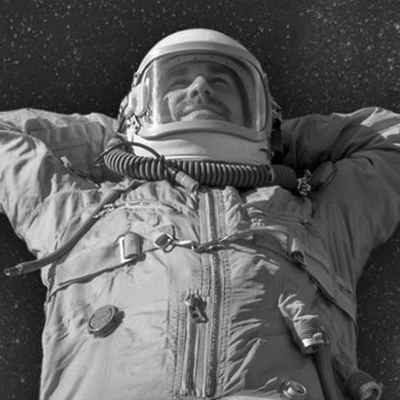Report from the DLR-NASA bed-rest study: How does it feel to lie down for 60 days?
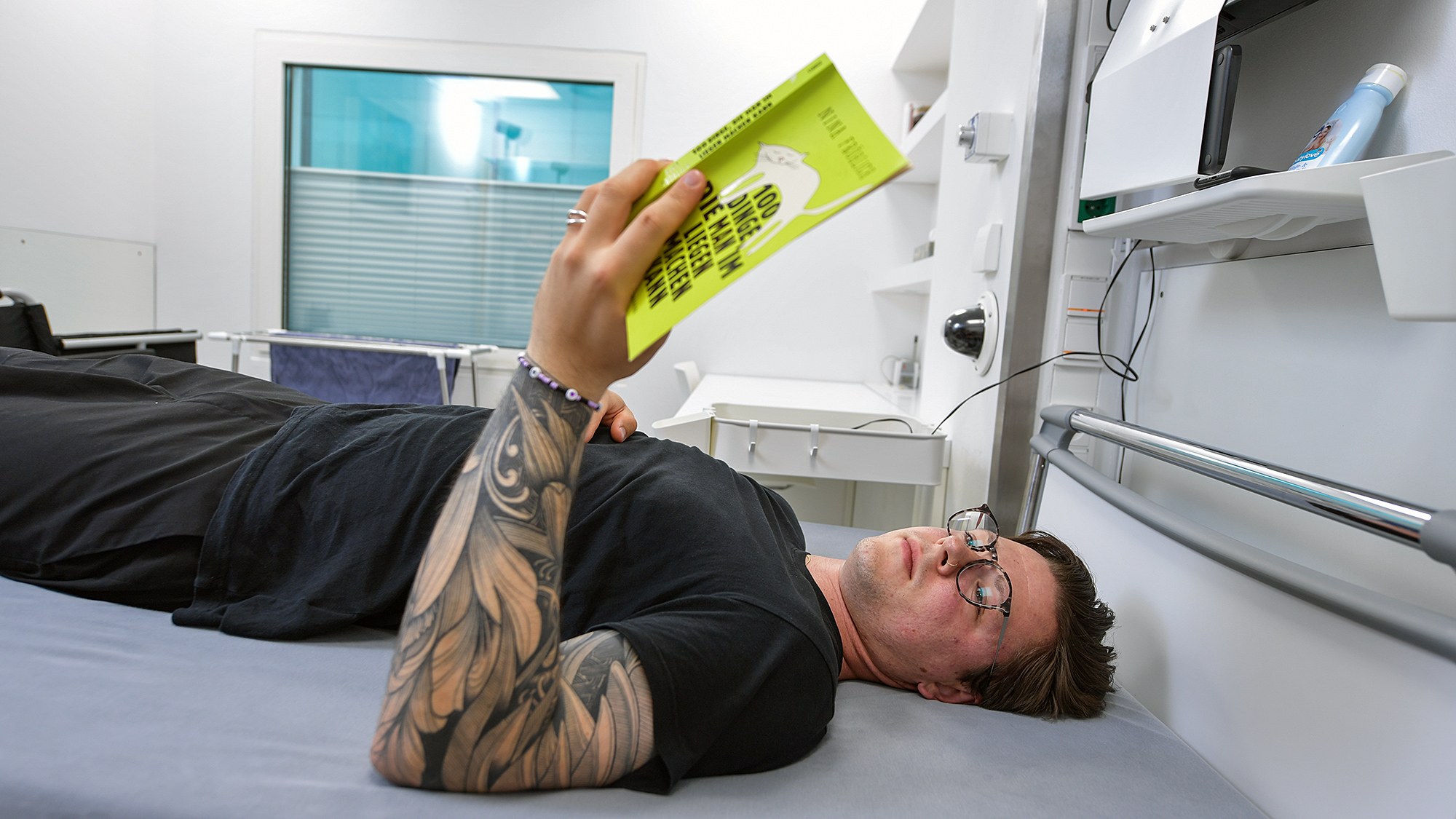
In this blog about the DLR-NASA bed-rest study, the 'Sensorimotor Countermeasures Study (SMC)', we provide a glimpse into the daily lives of our participants, the work of the extensive support team around them and what it means to be part of such a large-scale research project.
How does microgravity affect the human body and what can be done to counter its negative effects? On Earth, bed-rest studies serve as models to simulate the impact of microgravity on the human body during space missions, enabling us to study the reactions, effects and possible countermeasures. After a two-week acclimatisation and preparation phase in which participants completed numerous tests and experiments, our volunteers in the current DLR-NASA bed-rest study have now spent over six weeks lying in beds tilted six degrees head-down. They will remain in this position for a total of 60 days. All examinations, tests and everyday activities, including eating and showering, are conducted while lying down.

Today, we share an update on the lives of our participants in the study. We asked them how they have experienced the study so far and how they are coping as 'terrestrial astronauts'. By now, everyone has settled well into the bed-rest routine and some even say they could imagine continuing this way. However, that is not an option – after 60 days, everyone 'must' get up and begin an intensive two-week rehabilitation and exercise programme before being discharged home. This phase is crucial for science, as it allows us to explore the impact of bed rest on balance and to assess the effectiveness of countermeasures designed to maintain stability and gait.

A new record: 100 days of bed rest – but not in one go
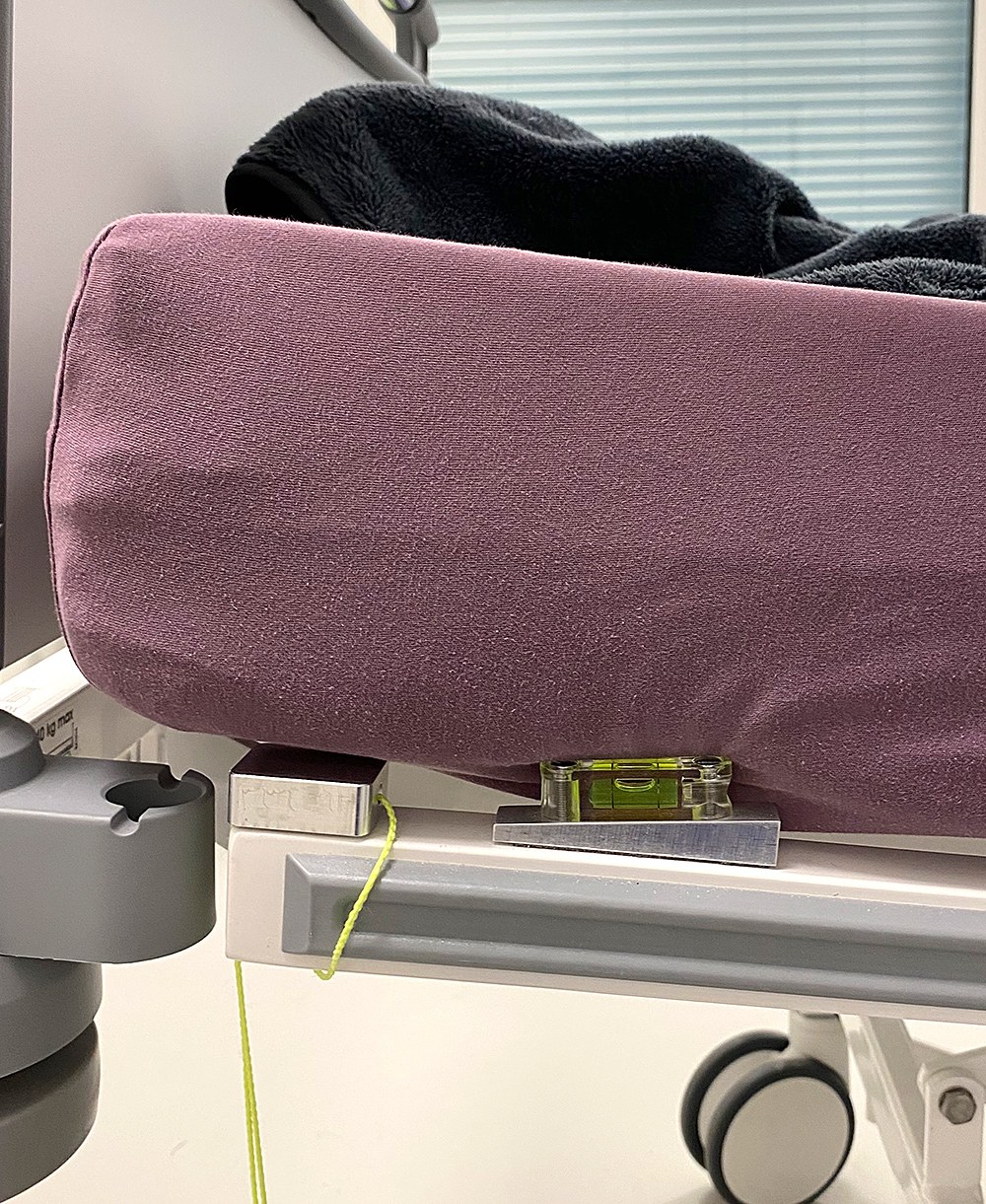
One of our participants has just broken a special record: he has reached his 100th day of bed rest! However, this milestone was achieved across three separate studies, not in a single one. He previously participated in the 2017 VaPER study and the SANS study in 2021, both of which involved 30 days of bed rest. As an 'old hand’, he was already familiar with much of what to expect. However, every group is different and the procedures are continually adjusted and optimised. It usually takes him four to six days to adapt to the bed rest, after which everything settles into a routine. The way participants spend their free time also varies: this group has opted for movie nights, whereas previous groups preferred board games. He is very satisfied with how this study has progressed and would even consider signing up for a fourth time.
One of the first-time participants shared her experience of moving-in day: she felt at home immediately and was warmly welcomed by both the DLR team and the other participants. It took her two to three days to adjust to the bed rest, but once she settled in, the time started to fly by. She is observing the physical changes with great interest and is already looking forward to standing up again. The fear of accidentally standing up has long faded, although she once dreamt about it – in the dream, she was distraught, thinking she had 'messed up important NASA data'. Fortunately, she was able to laugh it off upon waking. In the meantime, she has been working diligently on her master’s dissertation and plans to complete it before the study ends.
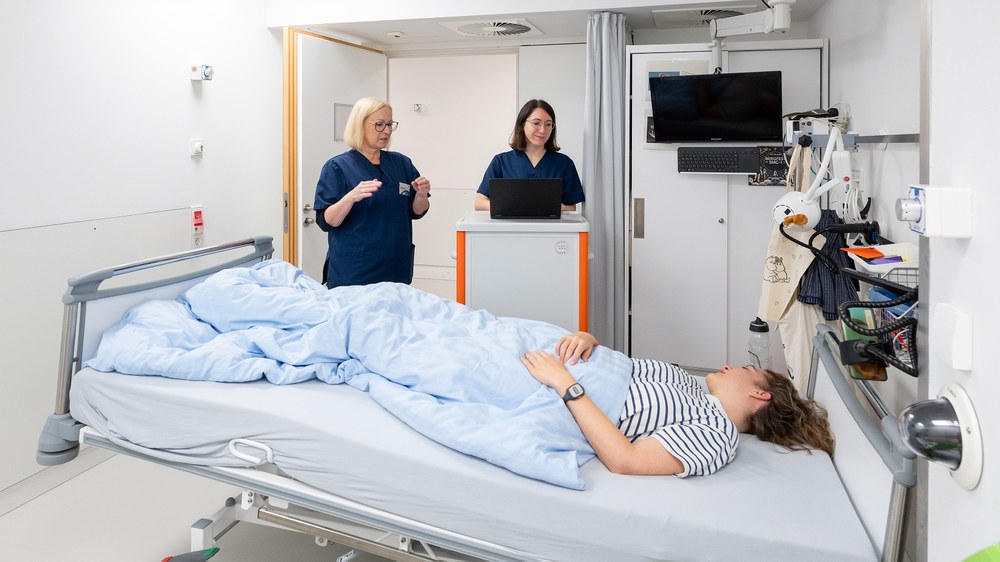
Another new participant also felt at ease right from the start. Thanks to extensive preparation and time spent familiarising herself with the study, adapting to the routine and the team was easy. Everyone is highly motivated and passionate about the project. The numerous experiments and tests are well-organised and support is readily available for any questions that arise. Initially, she found it somewhat challenging to move around and follow the bed-rest rules, as every activity takes longer in this position. In normal life, she is very active and thought she might miss exercising during the study. But even that has not been an issue and she is enjoying this unique experience. Food also plays a significant role – the varied meals are always very lovingly prepared and delicious.
Another participant reports that he has adapted to the routine and rarely has time to feel bored. The first few days of bed rest were somewhat challenging, with headaches and back pain, but these passed after about a week. His neighbour in the next single room did not expect the participant group to be so well-matched and harmonious. By now, they are all pros and the study runs like clockwork. He has developed a sense of competition during the tests and experiments, which helps keep him motivated. Time also flies for him and he is looking forward to getting up and tackling the challenging days ahead.
Carpe diem: preparing for the state examination
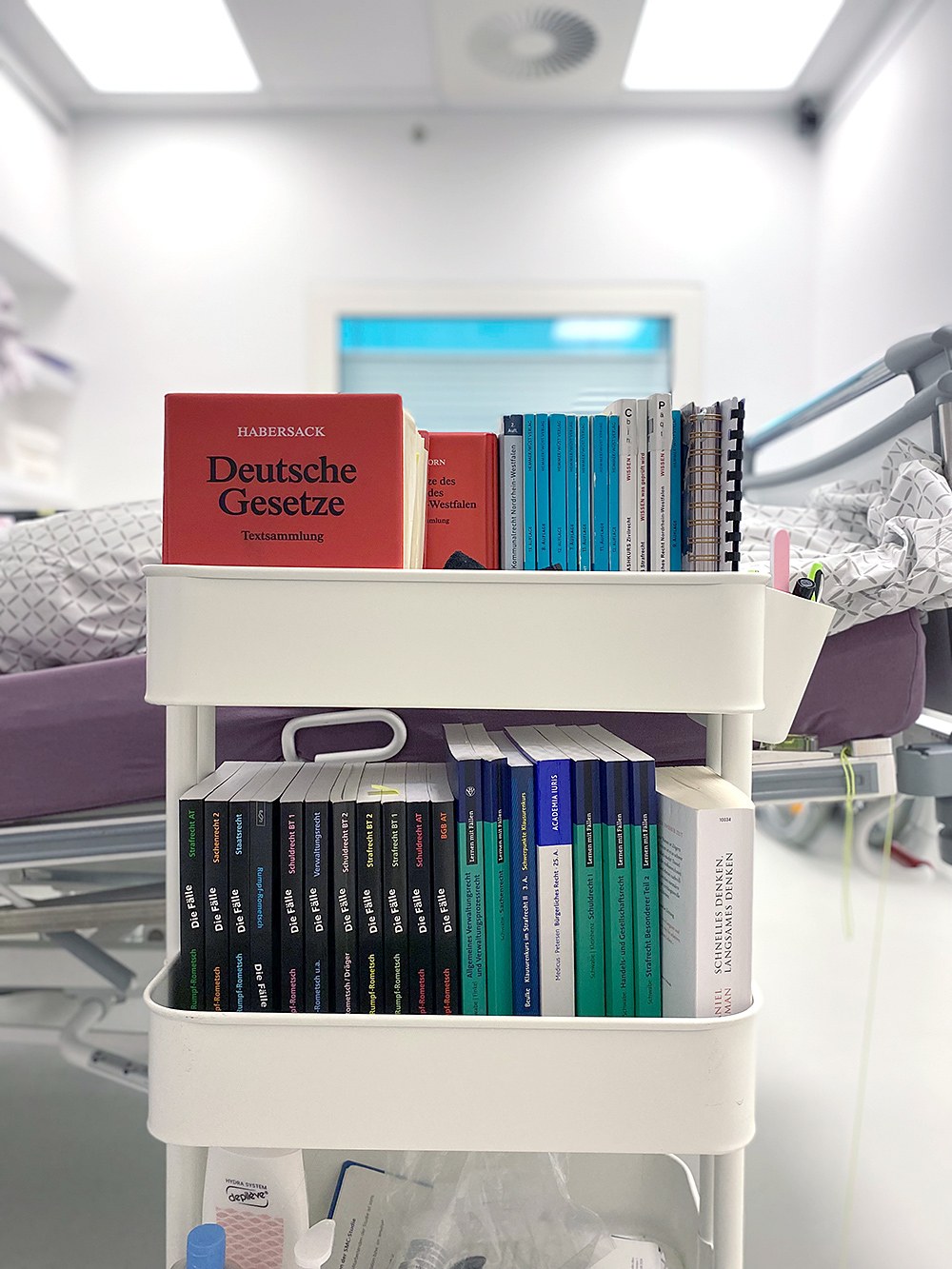
Among the participants, there is also a 'repeat offender'. She is participating for the second time and says that the weeks are flying by and she can hardly believe that most of the study is already over. But she is also very busy preparing for her first state exam and writing numerous practice essays – all while lying down! Another first-time participant recalls feeling excited and curious upon her arrival. The first few days, packed with experiments, tests and examinations, left her little time to think and she quickly felt part of the team. Interaction with the other participants is important to her, and they often visit each other in their rooms. The countermeasure training is challenging but enjoyable. The food is varied and healthy, although she does miss coffee. Adjusting to the head-down tilt took a few days and she also had to mentally adapt to the new situation. However, in the study environment, the adjustment came naturally and the experience has been extraordinary for her.
Another second-time participant found the first few days of the study, with all the new routines and tests, particularly interesting. During the first few weeks, NASA researchers were also there to explain all the details and background information together with the DLR team. She found the balance tests and metabolic experiments especially fascinating. Otherwise, she spends her time reading, making phone calls and participating in online training for her nursing profession – "to keep my mind occupied".
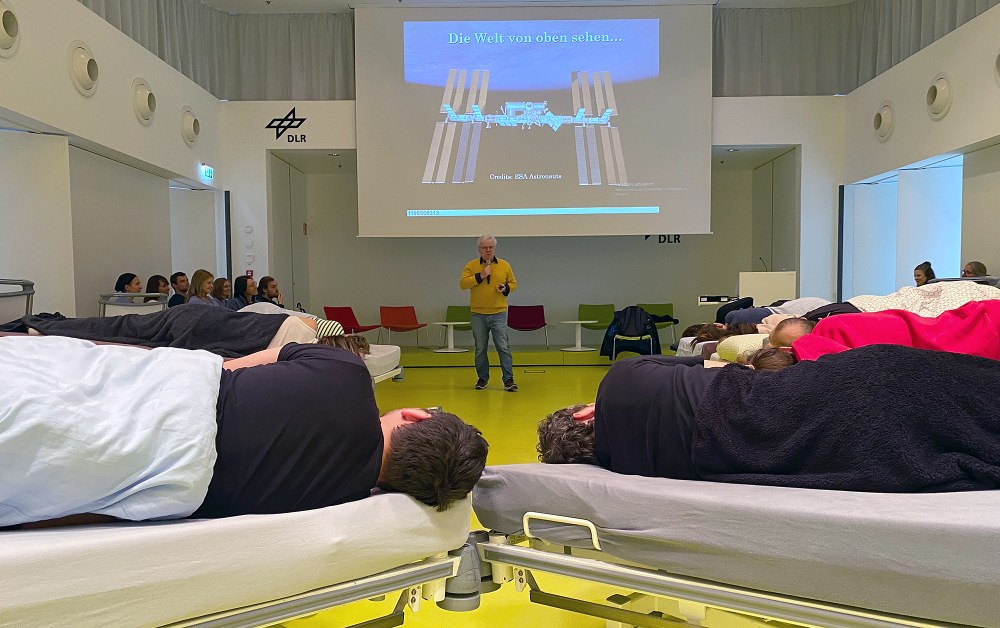
One participant found the transition to lying down less dramatic than expected – you just lie down and simply don't get up again. The first two weeks before starting bed rest were very exciting and informative, offering many insights into her own body and the scientific questions being explored. In her free time, she is considering her career options and volunteering with the Scouts, which she can also do online by attending meetings and working on an annual report. The movie nights with the other participants provide a wonderful opportunity to meet and exchange ideas. Her neighbour is a former professional athlete who is using the study period to reorient her career, even conducting job interviews while lying down. This time here helps her to calm and consider what she wants to achieve in life. The study provides an opportunity to focus on oneself and serves as a break from daily life. Others might go abroad for three months, while she is finding a new path here, taking various online training and coaching courses.
All participants emphasised the positive atmosphere within the entire team and noted how much enjoyment the DLR team finds in their work. We love to hear such praise and are happy to return it: you all are fantastic, dear participants!
Related links
- Blog post – Lying down and learning: on strings, lying on one's side and self-discovery
- Blog post – Milestone reached in the bed-rest study
- Blog post – After three weeks of bed rest: thumbs up for the nutrition team!
- Blog post – Taking a lie-down for science: New NASA bed-rest study begins in the :envihab at DLR
- Blog post – 400 kilometres apart and yet connected: My analogue mission with the crew on the ISS
- Bed Rest Studies at DLR
- Participating in Studies at the DLR Institute of Aerospace Medicine
- Become a test person (m/f/d)
- The aerospace medicine research facility :envihab
- DLR Institute of Aerospace Medicine
Tags:

